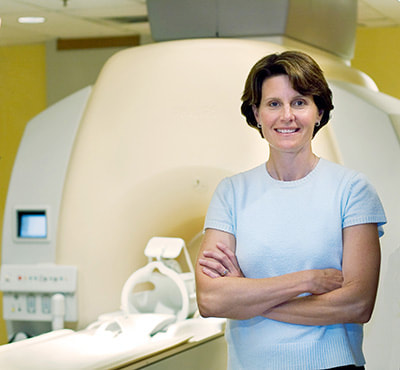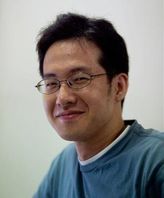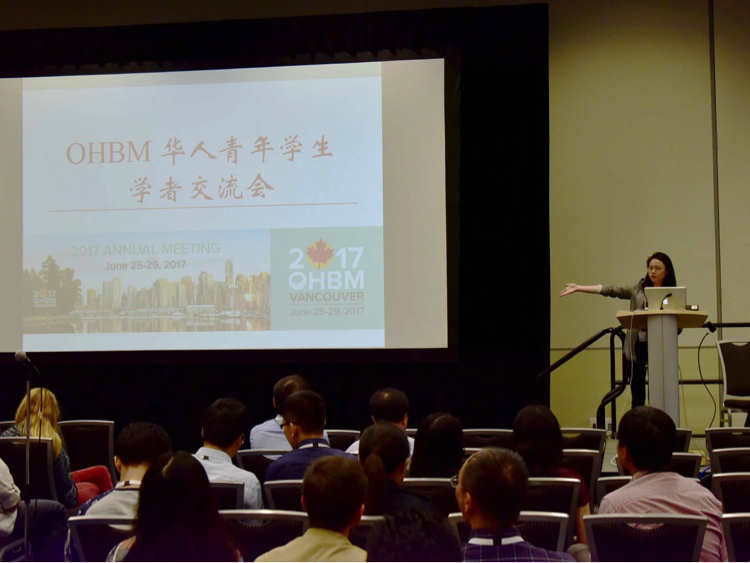|
By David Mehler
The Local Organising Committee (LOC) at OHBM 2017 achieved a remarkable feat. With public health experts voicing concern about the spread of the Zika virus from South to Central America, it was decided that it was too risky to expose so many young OHBM members to potential infections in Puerto Rico, this year’s original site for OHBM. At this point, the Vancouver LOC stepped forward. They organised an entire, major international neuroimaging conference not in four years, as planned, but in one. Here we speak to Lara Boyd, Professor of translational neuroscience at the University of British Columbia (UBC), chair of the Vancouver LOC, and TEDx sensation. We find out about the challenges of setting up OHBM at such short notice, and about her work mapping out rehabilitative medicine in stroke survivors:
0 Comments
Q&A with Dr Kihwan Han |
| Depression is a common psychiatric disorder amongst individuals with traumatic brain injury (TBI). Up to 77% of individuals with TBI have been found to experience depression. What can brain mapping tell us about depression after TBI? I met with Kihwan Han from the Center for Brain Health at the University of Texas at Dallas to talk about his recent research: an eight-week intervention that aimed at battling depression symptom severity in individuals with TBI. |
Kihwan Han (KH): In this study we investigated whether 8 weeks of cognitive training would reduce symptoms and severity of depression in individuals with chronic TBI. Indeed, we found reductions in depressive symptoms in individuals with mild-to-severe depressive symptoms compared to individuals with minimal depressive symptoms. Decreases in depression severity were also associated with improvements in self-reported post-traumatic stress disorder (PTSD) symptom severity, TBI symptom awareness and functional status. Further, reduced depressive symptoms were related to thickening of regional cortical gray matter and reductions in abnormal brain connectivity (Figure 2).
Q&A WITH HONG SEOK-JUN
This interview series highlights abstracts from the OHBM meeting that were identified by the Program Committee as “potentially newsworthy”. Abstract authors were asked to explain their research in more detail, discuss the context of their findings, and the possible implications for the field.
| Autism spectrum disorder (ASD), is a developmental disorder that contains extensive symptomatic variability across people. There are presently no biomarkers to guide diagnosis of ASD - it continues to be diagnosed only after a child does not demonstrate the appropriate communication skills. In order to work toward identifying potential biomarkers from brain data, Hong Seok-Jun, a student with Prof Boris Bernhardt from the Montreal Neurological Institute at McGill University in Canada focused on Multidimensional MRI subtyping of ASD in adults. I met with Hong Seok-Jun to better understand his motivation to conduct this study and the implications of his findings. |
Travel makes you richer --- it lets you experience new landscapes, languages and ways of thinking. This philosophy sits well with OHBM. Our organisation promotes travel and discussion amongst brain mappers from different corners of the globe and different sections of society.
As part of this cultural engagement, we currently have 5 chapters, representing brain mappers in the Alpine region, Turkey, China, Korea and Latin America. These Chapters allow researchers from clear geographical areas to pool their knowledge and resources, and speak with a unified voice both within OHBM and to stakeholders in science more generally. An excellent example of the knowledge that can be gained - not just within these groups but by outside observers - can be seen from the first meeting of Chinese Young Scholars.
This inaugural event was co-organised by Chao-Gan Yan, and originally covered by Dengfeng Huang in Mandarin on WeChat. Here we present an English translation, revealing to those less adept at reading hànzì just how the event went, and offering useful career advice for early career researchers around the world.
BLOG HOME
TUTORIALS
MEDIA
contributors
OHBM WEBSITE
Archives
January 2024
December 2023
November 2023
October 2023
September 2023
August 2023
July 2023
June 2023
May 2023
April 2023
March 2023
January 2023
December 2022
October 2022
September 2022
August 2022
July 2022
June 2022
May 2022
April 2022
March 2022
January 2022
December 2021
November 2021
October 2021
September 2021
August 2021
July 2021
June 2021
May 2021
April 2021
March 2021
February 2021
January 2021
December 2020
November 2020
October 2020
September 2020
June 2020
May 2020
April 2020
March 2020
February 2020
January 2020
December 2019
November 2019
October 2019
September 2019
August 2019
July 2019
June 2019
May 2019
April 2019
March 2019
February 2019
January 2019
December 2018
November 2018
October 2018
August 2018
July 2018
June 2018
May 2018
April 2018
March 2018
February 2018
January 2018
December 2017
November 2017
October 2017
September 2017
August 2017
July 2017
June 2017
May 2017
April 2017
March 2017
February 2017
January 2017
December 2016
November 2016
October 2016
September 2016
August 2016
July 2016
June 2016
May 2016
April 2016




 RSS Feed
RSS Feed